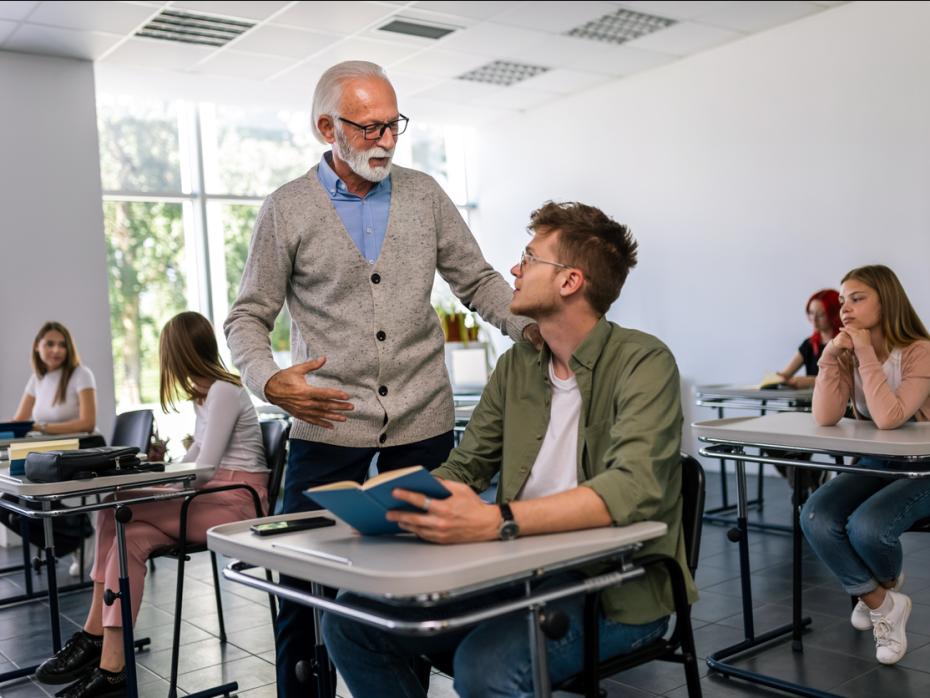
Show students you care
When you prioritise well-being, your students will thank you for it. Show kindness by taking steps to reduce cognitive load and create a welcoming and engaging learning environment
You may also like
Popular resources
Empathy, the ability to understand other people’s feelings, can be learned and developed. A good teacher demonstrates this quality and, in doing so, inspires, motivates and connects with their students. Having experienced education from both sides, I know just how crucial compassion is to learning. Empathy and connection, timely communication and constructive feedback make a more enjoyable and rewarding learning experience for all. Here are some of the strategies I use.
Make a good first impression
In my first lecture for any given course, I don’t teach any new content. Instead, I take the time to introduce myself to the students and get to know them. I provide a weekly schedule outlining what we’ll do in the course so they know what to expect. I also provide them with an outline of how I expect their assignments to be presented and the rubrics that will guide my marking. I remind them of study skill methods along with on-campus support and resources they might find useful. A student once noted that in doing this, I was “mapping a direct path to an A+”. This upfront investment pays off. Other students use descriptors such as “enjoyable”, “exciting”, “interactive”, “understanding”, “helpful”, “patient” and “approachable” in their feedback. Students appreciate the clarity, patience and understanding that this demonstrates.
Simplify things
Making straightforward adjustments can reduce students’ cognitive load, improving their performance.
Examples of modifications include:
• Keeping the layout of your course page on the learning management system (LMS) consistent (eg, colours, fonts, appropriate labels etc)
• Signposting students to various additional learning policies specific to your course (eg, a course expectations and participation policy)
• Creating weekly introduction and to-do list sections on your course page
• Sharing course materials in alternative formats and using multimedia content (eg, videos and podcasts) to cater to students’ learning styles and to improve accessibility.
Encourage engagement
Have students prepare in advance so they are primed for your lecture or other learning activity. If this is not possible, allow some reading and question time beforehand. Also, think about how you can use the resources available to you to break down complex concepts in your subject into digestible content. For example, some platforms have gamified or reference learning resources you can use, such as crosswords or flashcards, to help students recall information from previous courses and link it to current course content.
Another tip is to encourage peer-to-peer learning by running informal course-related discussions before they leave the lecture theatre. One way to do this is by using the think-pair/group-share activity in the final five minutes of the lecture. This prompts reflection and collaboration as they share key takeaways, challenges and further learning opportunities.
Prioritise the student experience
I see it as my duty to provide a high-quality student experience. This, in turn, influences my attitude toward students. Being receptive to students’ comments and feedback about the course or your teaching is paramount. Where it’s within your power to improve the course experience, even in a small way, do not hesitate. Remember, you were once in their position!
Acknowledge, listen and respond kindly and appropriately to students’ concerns, aspirations and career goals. Try to be understanding with students and the challenges they face while completing their studies. I strive to be supportive and responsive to student needs where possible, whether that is through answering their general, course and programme-specific questions or granting an assignment extension. I usually set a timeline to reply to students’ email queries within 48 hours and try to grade assignments within a week to 10 days after submission.
I have also made use of the course engagement analytics on the LMS to identify and assist students who are struggling or who have fallen behind. This has enabled me to reach out compassionately and offer them personalised support, leading to increased retention and graduation rates.
As a lecturer, you are presented with an opportunity to have an impact on all kinds of people. Whether you realise it or not, your interactions leave a lasting impression. Consistent use and practice of the above strategies will improve your teaching and students’ learning, as well as help to raise the reputation of your institution.
Natalie K.D. Seedan is a sports sciences laboratory technician and part-time lecturer at the University of the West Indies Cave Hill Campus.
If you would like advice and insight from academics and university staff delivered direct to your inbox each week, sign up for the Campus newsletter.





Comments (0)
or in order to add a comment